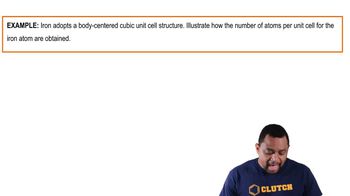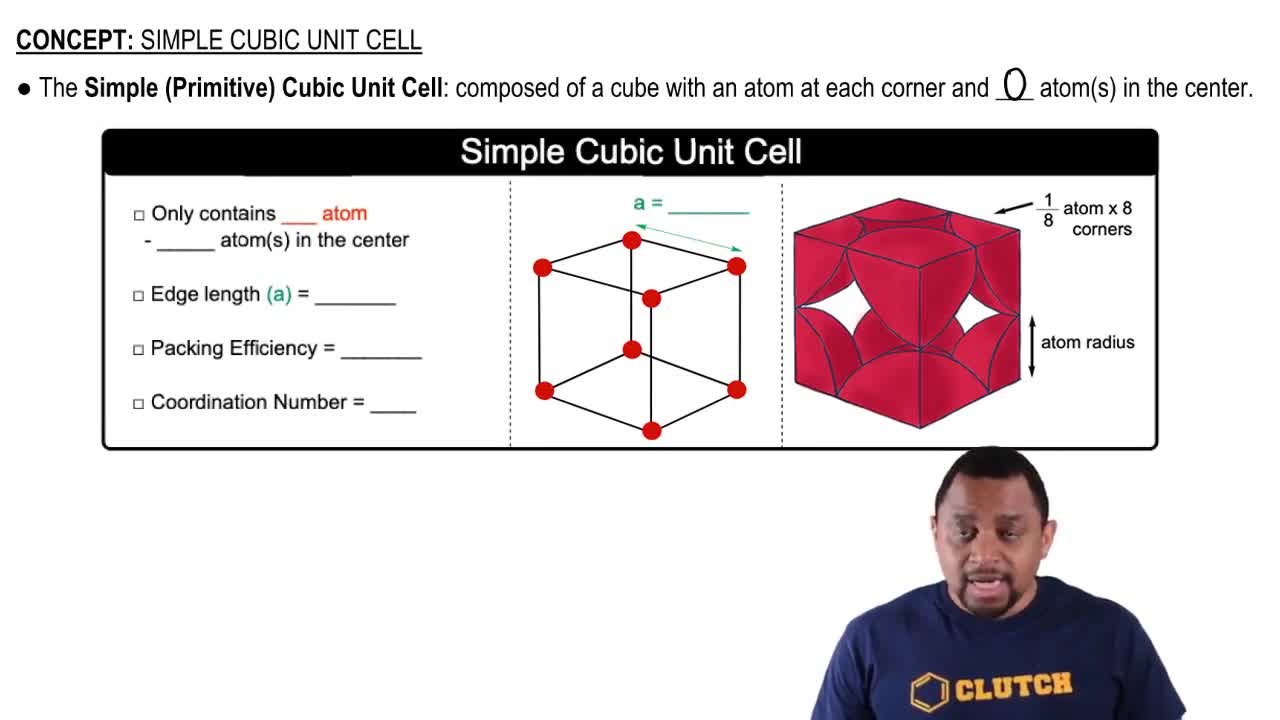Here are the essential concepts you must grasp in order to answer the question correctly.
Body-Centered Cubic (BCC) Structure
The body-centered cubic (BCC) structure is a type of crystal lattice where atoms are located at each of the eight corners of a cube and a single atom is positioned at the center of the cube. This arrangement results in a coordination number of 8, meaning each atom is in contact with eight neighboring atoms. Understanding this structure is essential for determining the number of atoms per unit cell.
Recommended video:
Body Centered Cubic Example
Unit Cell
A unit cell is the smallest repeating unit in a crystal lattice that reflects the symmetry and structure of the entire crystal. It defines the arrangement of atoms in the crystal and is characterized by its dimensions and angles. In the case of BCC, the unit cell contains a specific number of atoms that can be calculated based on the arrangement of atoms within the cell.
Recommended video:
Atomic Packing Factor (APF)
The atomic packing factor (APF) is a measure of how efficiently atoms are packed in a unit cell. It is calculated as the ratio of the volume occupied by the atoms in the unit cell to the total volume of the unit cell. For BCC structures, the APF is approximately 0.68, indicating that 68% of the volume is filled with atoms, which helps in understanding the density and stability of the crystal structure.
Recommended video:




